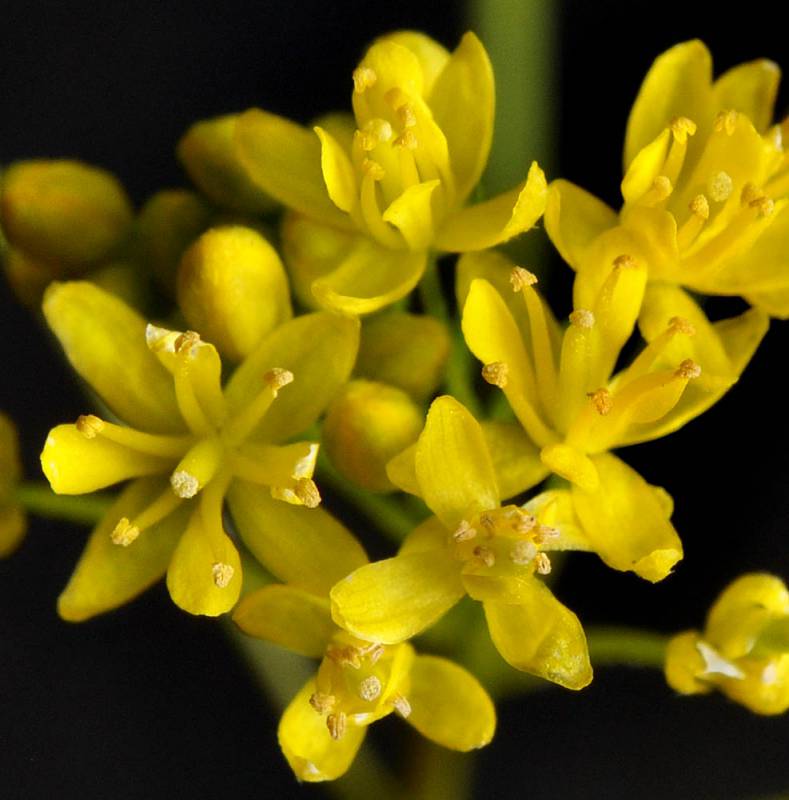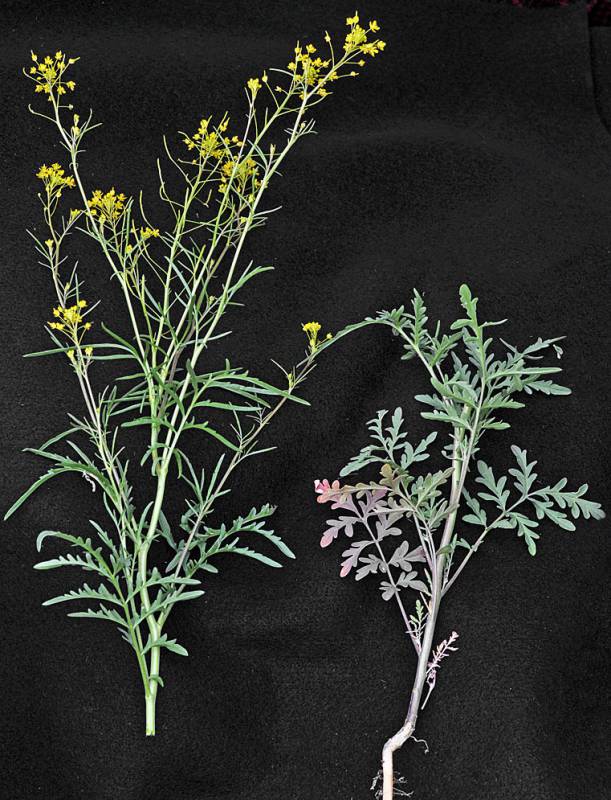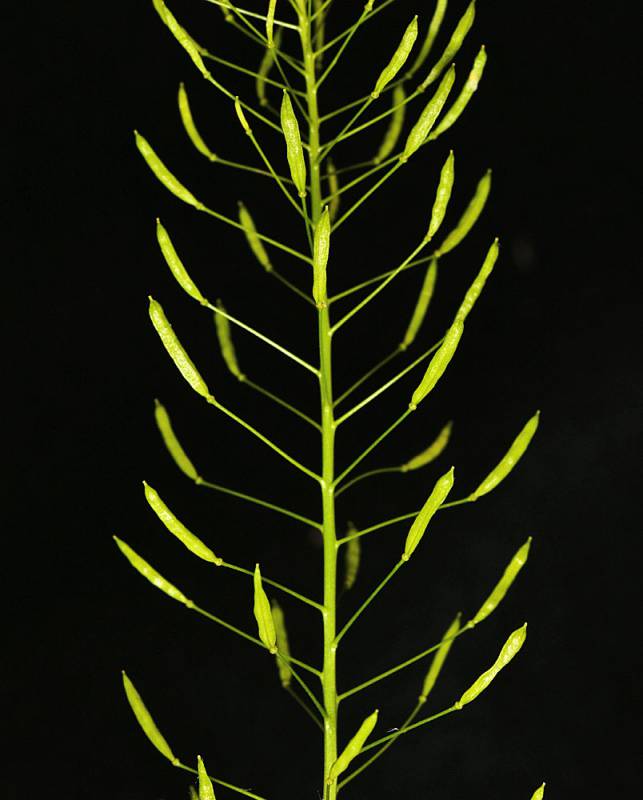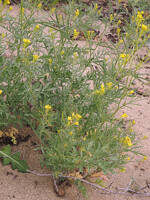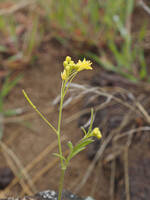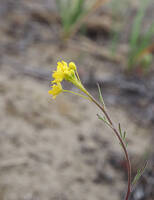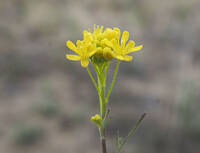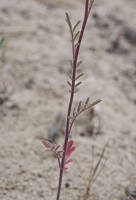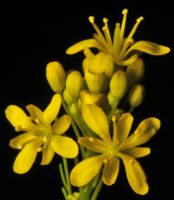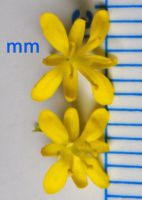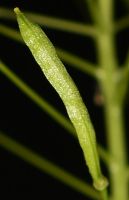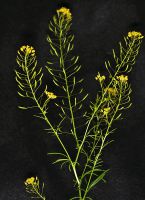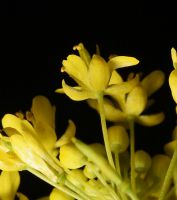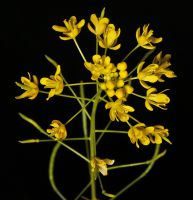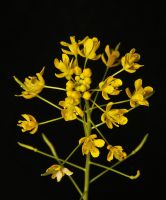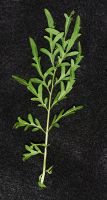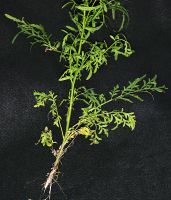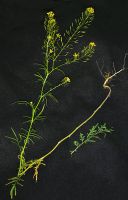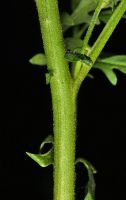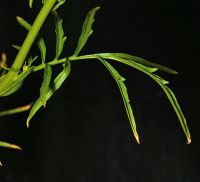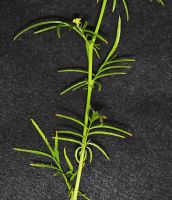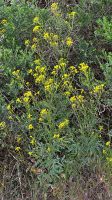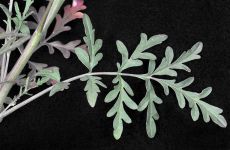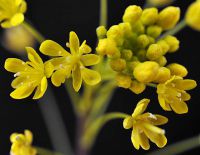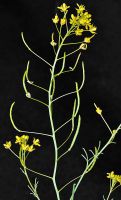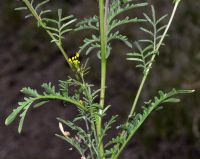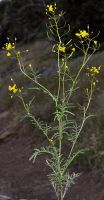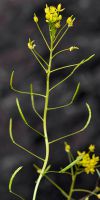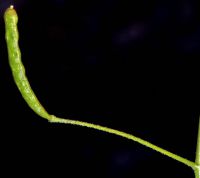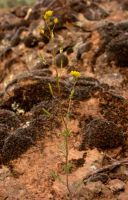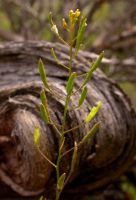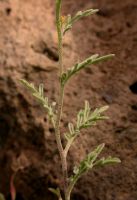Distribution: Occurring east of the Cascades crest in Washington; British Columbia to Oregon and Nevada, east to the Rocky Mountains from Montana to Arizona, but not New Mexico.
Habitat: Moderately dry forest openings and sagebrush desert.
Flowers: April-June
Origin: Native
Growth Duration: Annual
Conservation Status: Not of concern
Pollination: Bees, flies
Sub-glabrous and greenish to stellate and grayish annual, the stems 2-10 dm. tall, usually branched and with stalked glands.
Leaves alternate, ovate to oblanceolate, 2-10 cm. long, the lower ones pinnate-pinnatifid, the ultimate segments 1-3 mm. broad, becoming pinnatifid and slightly toothed or lobed above.
Inflorescence of densely flowered, bractless racemes; pedicles slender, spreading to ascending, 4-8 mm. long; sepals 4, spreading, 1-2.5 mm. long; petals 4, pale to deep yellow, clawed, 1.5-3.5 mm. long; stamens 6; style 0.1-0.7 mm. long.
Siliques nearly straight, 5-17 mm. long and 1-1.5 mm. broad, appearing lumpy, tapered and acute at each end; seeds in 1 series.
Publication: Pflanzenr. 86[IV,105]: 324. (as longipedicellata). 1924.
Descurainia pinnata (Walter) Britton ssp. filipes (A. Gray) Detling [KZ99]
Descurainia pinnata Britton var. filipes (A. Gray) M. Peck [HC]
PNW Herbaria: Specimen records of Descurainia longepedicellata in the Consortium of Pacific Northwest Herbaria database
WA Flora Checklist: Descurainia longepedicellata checklist entry
OregonFlora: Descurainia longepedicellata information
E-Flora BC: Descurainia longepedicellata atlas page
CalPhotos: Descurainia longepedicellata photos

